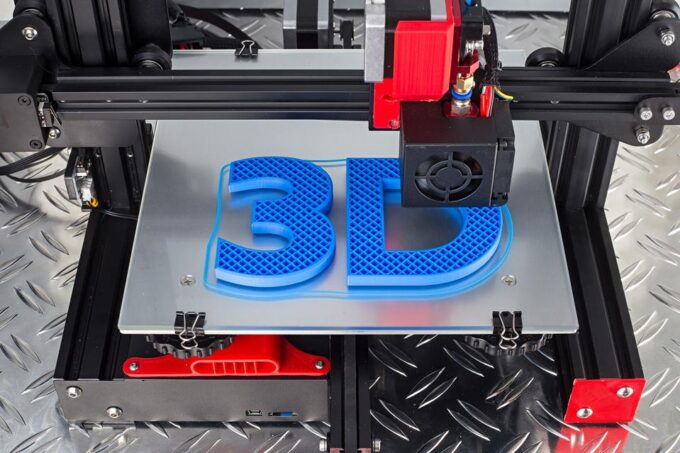The building materials industry is quickly evolving. From new regulations and emerging technologies to rising demand for sustainable products and business practices, recent developments have have combined to drive new business models that affect how building materials are manufactured, used and recycled.
While keeping up with these trends can be challenging for material suppliers, they also present opportunities for creating new competitive advantages and keeping pace with what customers and contractors expect regarding product quality and cost.
That said, here are some key trends expected to shape the future of the building materials sector in 2024 and beyond.
3D Printing Will Become More Commonplace

Additive manufacturing technology, more commonly known as 3D printing, is becoming increasingly affordable and accessible, making it a viable option for small-scale construction projects. In 2024, we expect to see a significant increase in the use of 3D-printed building components, particularly in the residential sector.
The potential applications of 3D printing in the construction sector are exciting. When done at scale, 3D printing could offer a faster and more energy efficient approach to fabricating complex structures made from plastic, metal and concrete. According to an Allied Market Research report, construction firms like BAM and Vinci have experimented with 3D printing concrete — a market estimated to grow to $1.6 billion by 2027.
Although 3D-printed concrete is still in its early stages, it has the potential to completely change how buildings are designed and constructed.
Demand for Sustainable Materials Will Grow
As awareness of the importance of sustainability grows, we expect to see a shift towards more sustainable building materials. Natural and recycled materials are predicted to become more popular as they have a lower environmental impact than traditional construction materials.
An Allied Market Research report predicts that the “green” building materials market will grow to $511.2 billion by 2030 — a compound annual growth rate of 8.1% from 2024. Recycled building materials are a particularly exciting market, as are low carbon footprint materials.
A large part of the shift to sustainable building materials will be driven by a combination of new regulations and consumer demand. For example, the Environment Act 2024 establishes an official post-Brexit framework for sustainability and sets legally-enforceable targets for air quality, water quality, waste management and biodiversity.
Material suppliers can use this trend as an opportunity to win new business. Verification schemes like CHAS’ Verified Supplier allow suppliers to demonstrate their compliance with regulations (including environmental laws) and prequalify for tenders with specific requirements for environmental management, health and safety, modern slavery and more.
Digitalisation Will Transform the Industry

The building materials sector is set to undergo further periods of digital transformation. Online platforms will make it easier for buyers and sellers to connect, and new software applications will enable more efficient production and distribution of building materials.
For example, drones and LiDAR (light detection and ranging) scanning enable companies to quickly survey and render 3D models of construction sites and projects at speeds unheard of before. Similarly, Building Information Modelling (BIM) enables the rapid creation and sharing of digital representations of physical spaces — making project management easier than ever.
The Rise of Modular Construction
As construction projects become increasingly complex, we expect to see growth using modular construction methods. This approach allows different project elements to be manufactured off-site and assembled on-site, saving time and money.
The rise of modular construction is closely linked to another industry trend: prefabrication. This process is where building components are manufactured in a factory and assembled at a construction site. Prefabrication offers many benefits, such as faster construction times, consistent quality control, and endless possibilities for modular construction projects.
New Business Models Will Emerge

The traditional business model for the building materials industry is based on selling products to construction companies. However, we expect to see the rise of new business models in 2024, such as subscription-based services and pay-per-use arrangements.
The Industry Will Become More Globalised
The building materials sector is becoming increasingly globalized as companies look to expand their operations into new markets. In 2024, we expect continued growth in cross-border trade and investment in the sector.
Consolidation Will Continue
Many small and medium-sized enterprises characterise the building materials sector. However, we expect to see continued consolidation in the industry as larger companies look to expand their market share.
New Technologies Will Emerge

As the building materials sector evolves, we expect to see the emergence of new technologies that will change the way construction projects are designed and built. For example, smart materials that can self-assemble could be used to create structures without the need for traditional construction methods.
The Workforce Will Change
The building materials sector is set to undergo a significant change in its workforce in the next few years. Introducing new technologies will require new skills, and the industry will need to attract younger workers to replace those who retire.
The Sector Will Become More Regulated
As the building materials sector becomes more globalised, we expect to see an increase in regulation. New standards and codes of conduct will be introduced to govern the production and use of building materials.
For example, the Building Safety Act modifies how high-risk buildings will be built, maintained and made safe. Builders can expect an intensified focus on the fire safety impact on structures, ranging from cladding to partition walls.
Find Opportunities for Growth in These Trends
The building materials sector is set for significant change in the next few years. Emerging technologies and new business models will transform how construction projects are designed and built. Sustainability will become a key driver for the industry as awareness of the importance of environmental protection grows.
The sector will also become more globalised as companies expand their operations into new markets. These trends will have a major impact on the workforce, as new skills will be required to meet future challenges. The sector will also become more regulated as new standards and codes of conduct are introduced.








